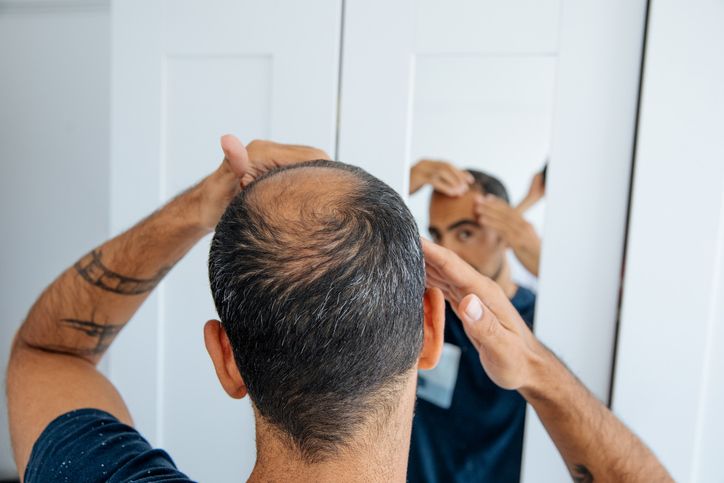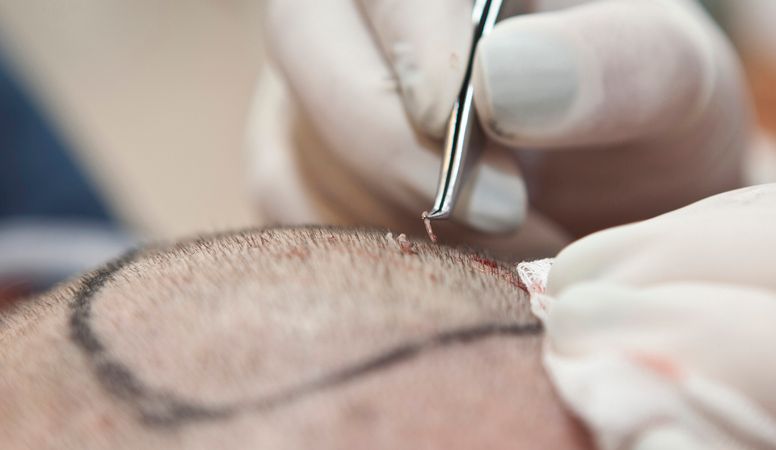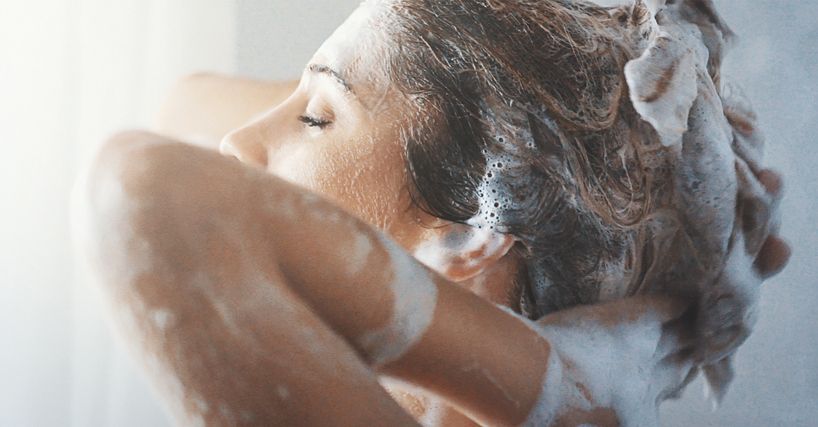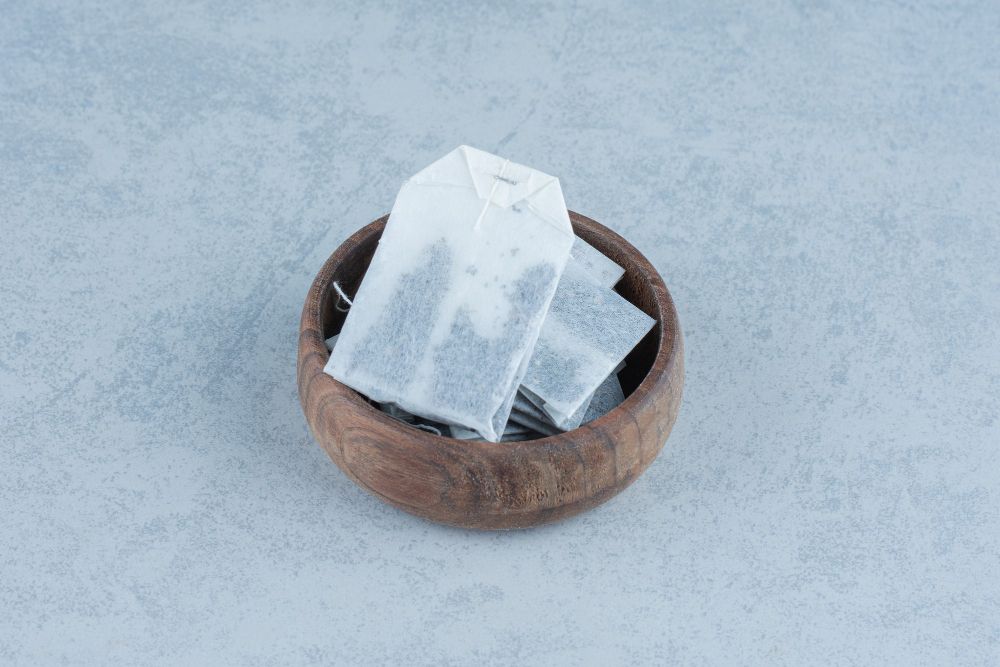

Book Now to Experience
F8 Hair Regrowth Treatment
1 Minute Self-Registration
Date should not be before minimal date
Author: Puteri Fikri|Updated: 23 July 2024
In one way or another, a person's hair can be one of the first things we look at. In general, hair completes one's physical appearance and gives the impression to others. Whether the person chooses to have long or short hair or even go bald is totally up to that individual. Losing more than 100 strands of hair daily can cause noticeable hair loss. With the overall hair thinning and excessive shedding, you can start to find out whether you want to find a cure to prevent hair loss or just go with the process.

1
Type of hair loss can occur

Patterned hair loss
Progressive symmetric hair thinning occurs due to pattern hair loss, most noticeably at the scalp's front, top, and sides. Both sexes experience hairline thinning in certain places, but males are more likely to experience significant hairline recession. Androgenetic alopecia, which develops after puberty and is a hereditary disorder brought on by exposure to the male sex hormone dihydrotestosterone, is the most prevalent type of patterned hair loss across the globe.
Diffuse Hair Loss
The loss of hair occurs uniformly across the scalp with diffuse hair loss. Telogen effluvium, which causes a daily loss of more than 200 scalp hairs, is the most typical type of diffuse hair loss.
Focal hair loss
Hair loss in patches on the scalp, and occasionally the face and torso, occurs due to focal hair loss. Alopecia areata, an autoimmune illness that frequently manifests in childhood but can afflict anyone of any age, sex, or race and ethnicity, is the most typical type of patchy hair loss. It is linked to medical conditions like autoimmune diseases like type 1 diabetes, asthma, allergic rhinitis, and atopic dermatitis. Up to 30% of persons with milder alopecia areata may spontaneously regain hair.
Female pattern hair loss
Each of your hair follicles will contain multiple hair strands. Depending on your scalp health and condition, the strands can cause your hair to volumize but also can make your hair appear thin, with each follicle containing only one to two strands. Male and female patterns in hair loss are different. Unlike men, female pattern baldness does not completely occur in certain large areas.
They will start to lose hair around the top and crown of the scalp. The hair part will widen, and the front hairline is normally unaffected. As for men, their pattern of hair loss normally recedes and forms an 'M' shape. A circular area on the vertex of the head will thin and expand over time. The hair will be finer and create a U-shaped pattern around the sides and a bald area on the back or the head.


2
Causes of hair loss

Hereditary hair loss
Hereditary hair loss, called androgenic alopecia, can occur in anyone regardless of gender, depending on family history. This kind of baldness is typically not brought on by an illness. Age, heredity, and variations in the testosterone hormone are all factors in it. There are many more men than women who experience inherited or pattern baldness. After puberty, male pattern baldness can develop at any time. By the time they reach the age of 70, almost 80% of men exhibit male pattern baldness.
Physical or emotional stress
One-half to three-quarters of scalp hair may fall out in response to physical or emotional stress. Telogen effluvium is the medical term for this cause of hair loss. When you shampoo, comb or run your hands through your hair, hair frequently falls in handfuls. After the stressful experience, you might not realize this for a few weeks or months.
This is temporary hair loss and normally will lessen along with time. This hair loss can occur after someone experiences high fever, childbirth, major surgery, severe emotional stress or even crash diets. Having sudden changes to the body will affect many aspects of your life, including hair loss.
The medical condition that causes hair loss
Thyroid disease can cause the hair to be uniformly sparse. It will involve the entire scalp rather than a discrete area. This condition mostly occurs in severe thyroid disease and will start after a few of the diagnoses.
Best treatment option for hair loss
When hair loss occurs, it is frustrating as the treatment results will take a long route before you can be relieved. Without proper, suitable, and consistent treatment, you can't have new hair growth. Without these treatments, it is impossible to reverse the hair loss you are experiencing.
That is why it is crucial to know the root cause of your hair loss and prepare a strategy from there. There are few tests and methods to determine hair loss causes in both men and women.
If you decide to go for professional help to stop further hair loss, the doctor normally will visually assess the pattern and determine which category it falls. This would be the first stage. However, a doctor will go further by asking about your medical history. Your dermatologist will inquire about the timing of the onset of hair loss, its patterns, the types of hairstyles you typically wear, whether your family experienced hair loss, and other specifics on your symptoms. He or she might inquire about any further medical issues you may have.
Even seemingly unrelated information, like the kind of foods you consume or whether you just gave birth, may hint at the reason for the hair loss. Your scalp is examined by a dermatologist to look for sores, soreness, inflammation, or scarring. The extent of your hair loss, its pattern, and whether any hair is breaking off are all things the doctor examines carefully.
Pull and tug test
The ease of the test determines the degree of hair loss. A dermatologist pulls gently on 40-strand portions of hair from various areas of the scalp while performing a pull test. Active hair loss is the loss of six or more strands per day.
Blood tests
One or more blood tests may be suggested by doctors if they believe the hair loss may be caused by an underlying medical condition, a vitamin or mineral deficiency, or a hormonal imbalance. Medical conditions like cancer treatment and high blood pressure will cause the person to lose hair.
For instance, a woman's hair loss may seem genetic if it is thinning all over the scalp, but it may be due to an iron deficiency. If serious health problems are ruled out from the root cause, then doctors can focus on what is the main reason.

3
Self-care to reduce hair loss

Steer clear of hairdos that tug on the hair.
Although hair is flexible, research has found that it can only be stretched so far before suffering irreparable harm. The bond between your hair and scalp can weaken if you wear tight hairstyles like tight ponytails, cornrows, or other tight braids.
Refrain from using hot hair styling appliances.
Your hair follicle becomes dry and more susceptible to harm when you use heat to style it. Curling irons, hair dryers, and hair straighteners can do all harm.
Avoid harsh chemicals and bleach
By severing the protein molecules known as keratin, chemical hair treatments like bleaching cause damage to the hair. Limit dyes, highlights, peroxide treatments, and perms if you're worried about hair loss.
Choose a mild shampoo
Shampoo cleans your hair by removing extra oil and grime. Shampooing your hair too frequently may damage it. Sulfates and other substances have been connected to frizz, dry scalp, and brittle hair.
Although there is no proof that any shampoo ingredient causes hair loss, it is possible that it contributes to less-than-ideal hair health. Try a shampoo that is as nearly all-natural as possible if you notice your hair is very dry or frizzy.
Find combs that have soft natural fibers brush.
A gentle brush made of natural fibers may help your hair retain a healthy amount of oil. Your hair's keratin proteins are piled like shingles on a roof, so lightly brush them in one direction.
Improve your nutrient intake.
Nutritional deficiencies can cause nuisance effects. Vitamins and minerals are very important to help with hair regrowth. While it may be one of the causes of hair loss that happens to you, nutrient deficiency like lack of vitamin d will lead to hair loss. Although we can get vitamin d from sun exposure, only a few know its benefits. Vitamin D stimulates new and old hair follicles.
How to encourage hair growth?
Start from the scalp if you are treating hair loss. Scalp irritation, brought on by tension, accumulation, and oxidative stress, will stunt the hair growth cycle.
Over time, the buildup of free radicals causes the hair follicle to close off, inhibiting growth and resulting in shedding.
This oxidative stress will influence the quality of your hair growth. It occurs when product, filth, and oil accumulate at the opening of your follicle, where your hair grows. This accumulation begins to gradually smother your hair root.
Keep your hair follicles clean.
The first step is to ensure that you frequently wash your scalp with mild shampoos. While shampooing, massage the scalp to promote blood flow, decrease stress, and stimulate hair growth.
Take all the nutrients you can get from supplements
Supplements such as peptides from collagen and the B vitamin biotin. Research on the use of biotin for hair development in healthy, nutrient-rich persons is scarce, such as the B vitamin biotin).
That's because it is well known from a mechanical perspective that having enough biotin is necessary for having healthy hair and that not having enough biotin can result in hair loss.
It's important to note that low biotin levels may be more common in pregnant women and people who have hair problems. For instance, a 2016 study indicated that nearly 40% of women experiencing hair loss also had biotin deficiency.
There are also several over-the-counter medications that cause slow hair loss and help hair grow. Pills like minoxidil and finasteride are prescribed to help grow and avoid missing hair.


4
Professional hair loss treatment

Low laser therapy
Low-level laser therapy, commonly known as red light therapy and cold laser therapy, exposes scalp tissues to photons. Weak cells absorb these photons to promote hair growth.
It is generally acknowledged that the treatment is less intrusive, safe, and uncomfortable than hair transplant surgery. According to the idea behind laser hair restoration, low-dose laser treatments stimulate blood flow and hair follicles, promoting hair growth.
Advocates for the operation give a variety of justifications for doing so, including it is not intrusive. There is no discomfort and no negative consequences. It will also make the hair stronger.
There are also downsides to this treatment which takes a lot of time. Treatment frequently requires multiple sessions each week for several months to observe improvements.
Hair transplant surgery
Various ways to perform a hair transplant involve moving hair from one area of your head to another. The most typical method is grafting. You must have thicker hair on your head in certain locations to qualify. A hair transplant is a procedure that adds hair to the scalp's bald areas or thinning patches.
It is frequently used for those who have already tried other hair loss therapies and is also known as hair restoration or hair replacement. Hair transplants are carried out by dermatologists (healthcare professionals who specialize in the skin) or plastic surgeons (healthcare professionals who specialize in reconstructive operations). Other methods are scalp reduction, flap surgery and tissue expansion
What you should be expecting in your journey to treat hair loss
When you notice that your hair is thinning, even though it usually doesn't hurt, it can be emotionally upsetting, especially if you can see the spaces between your hair and your scalp in some spots. Thankfully, there are several techniques to manage thinning hair and stop the issue from getting worse, except for permanent hair loss. You need to keep up with a consistent routine together with consuming a healthy diet to see an improvement. This is because a normal growth cycle of hair can take longer than expected. The normal cycle will take months, and regrowing hair is not easy.
FAQ
What type of physician should I consult for hair loss treatment?
You should first consult a dermatologist, who can determine the underlying reason for your hair loss and offer appropriate treatment. You may also need to consult an endocrinologist or another specialist in some circumstances.
What are the prices of professional hair loss treatments?
Professional hair loss treatments can be expensive, depending on the procedure, the practitioner, and your region. Certain treatments, such as topical medicines, may be inexpensive, whilst others, such as hair transplant surgery, may be highly costly.
Are there any risks associated with hair loss treatments?
Certain hair loss therapies, including as oral medicines, might cause erectile dysfunction and decreased libido. Other procedures, such as hair transplant surgery, may include hazards such as infection and scarring. Your doctor may go over the risks and advantages of each treatment with you.
Can professional hair loss treatments result in further hair loss?
Hair loss treatments are typically harmless and should not result in more hair loss. But, in rare situations, certain treatments can trigger telogen effluvium, which causes temporary hair shedding.
Will professional hair loss treatments be effective for all people?
There is no 100% successful hair loss cure for everyone. Treatment success is determined by the underlying cause of hair loss, the stage of hair loss, and other factors. Based on your specific needs and circumstances, your doctor can advise you on the best course of therapy.

Book Now to Experience
F8 Hair Regrowth Treatment
1 Minute Self-Registration
Date should not be before minimal date
Recommended Articles
COPYRIGHT© NEW BEAUTY MANAGEMENT LIMITED 2025. ALL RIGHT RESERVED.




